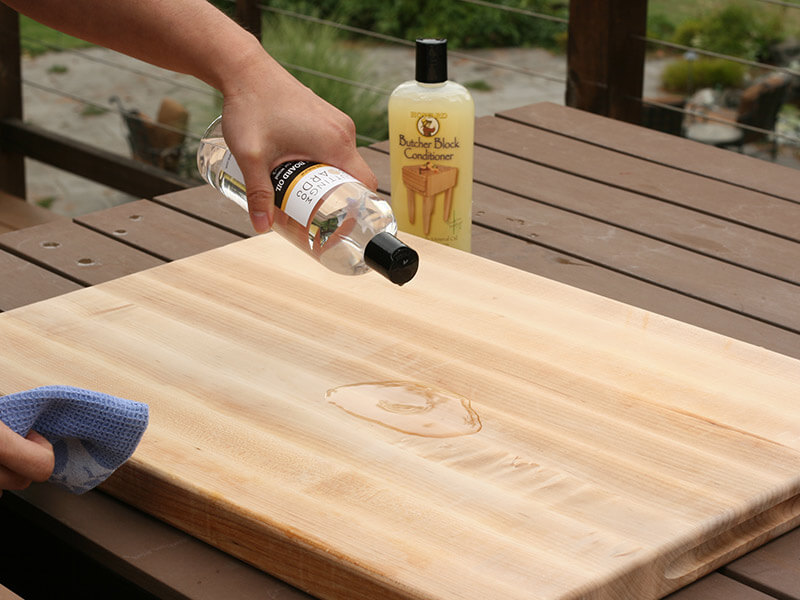Cutting Board Care and Maintenance: Protecting Your Investment
- Posted on

A high-quality cutting board is an essential tool in every kitchen, providing a stable and sanitary surface for food prep while protecting your knives. However, without proper care, even the best cutting boards can warp, crack, or harbor bacteria over time.
At BCKnife, our Kitchen Tools collection includes premium cutting boards in wood, bamboo, and plastic, designed for durability and long-term use. In this guide, we’ll cover everything you need to know about cutting board care and maintenance, helping you protect your investment and keep your kitchen safe and efficient.
Why Proper Cutting Board Care Matters
:max_bytes(150000):strip_icc()/__opt__aboutcom__coeus__resources__content_migration__serious_eats__seriouseats.com__images__2015__09__20150824-wooden-cutting-board-how-to-maintain-composite-kenji-8-5239b1c5d724431ea72e66fd4939bb1d.jpg)
Cutting boards endure daily wear and tear from knives, moisture, and heavy use. Neglecting maintenance can result in:
- Cracks and splits – Moisture and food residue can cause wood or bamboo boards to crack.
- Warping – Improper drying or storage can deform the board, making it unstable.
- Knife dulling – Hard or damaged surfaces can dull blades more quickly.
- Bacterial growth – Food particles and moisture can create an environment for bacteria.
Proper care ensures your cutting board remains functional, safe, and aesthetically pleasing for years to come.
Cleaning Your Cutting Board

Daily Cleaning Tips
Regardless of material, a basic cleaning routine is essential:
- Hand wash wood and bamboo boards – Use warm water and mild dish soap; avoid soaking or submerging in water.
- Plastic boards – Can usually be washed in the dishwasher, but hand washing extends their life.
- Rinse thoroughly – Remove all soap and residue.
- Dry immediately – Use a clean towel and store upright to allow airflow.
Deep Cleaning
For a more thorough cleaning, especially after cutting raw meat:
- Wood and bamboo – Sprinkle coarse salt or baking soda on the board, scrub with a cut lemon, and rinse. This helps remove odors and stains while sanitizing naturally.
- Plastic – Scrub with a brush to remove deep grooves and sanitize using a solution of one tablespoon bleach per gallon of water.
Oil and Condition Wood and Bamboo Boards

One of the most important steps in maintaining wood and bamboo cutting boards is oil treatment. Regular oiling prevents cracks, warping, and water absorption.
How to Oil Your Cutting Board
- Choose food-safe mineral oil or a specialized cutting board conditioner. Avoid vegetable oils, which can go rancid.
- Apply a generous layer over the entire surface.
- Let it soak for several hours or overnight.
- Wipe off excess with a clean cloth.
Frequency: Oil your board at least once a month for average use, or more frequently if it is used heavily.
Avoiding Common Mistakes
To protect your cutting board investment, avoid these common errors:
- Submerging wood or bamboo in water – Can cause warping and cracking.
- Using harsh detergents or bleach on wood – Damages fibers and removes natural oils.
- Cutting on the wrong surface – Avoid using wooden boards for extremely hard foods that can dent or scratch them excessively.
- Ignoring knife marks – Deep grooves can harbor bacteria and may require sanding.
Sanitizing Your Cutting Board
:max_bytes(150000):strip_icc()/clean-wooden-cutting-board-4772583_08-f78b97244f364ab3ba963ed8f21dce2d.jpg)
Sanitizing prevents the growth of harmful bacteria, especially after cutting raw meat or seafood:
- Wood and bamboo – Use a solution of one part vinegar to four parts water. Wipe the surface and rinse.
- Plastic – Use bleach solution or dishwasher cycles for high-temperature sanitation.
Always ensure boards are completely dry before storage to prevent mold or mildew growth.
Maintaining Knife Performance
Proper cutting board care directly impacts your knives. Soft, well-maintained surfaces like wood and bamboo preserve the edge of your blades, while damaged or overly hard surfaces dull knives quickly. Regular cleaning, oiling, and replacing boards when necessary keeps both your cutting surface and knives in top condition.
Storage Tips for Longevity
How you store your cutting board matters as much as how you clean it:
- Store upright – Allows airflow and prevents moisture buildup.
- Avoid stacking heavy items on top – Prevents warping.
- Separate boards for different tasks – Reduce cross-contamination by having dedicated boards for meat, vegetables, and seafood.
Choosing the Right Cutting Board
Selecting a cutting board that suits your cooking style reduces maintenance needs and extends its lifespan:
- Wood boards – Excellent for everyday chopping, gentle on knives, and visually appealing.
- Bamboo boards – Eco-friendly and durable, though slightly harder on knives.
- Plastic boards – Low maintenance, dishwasher safe, and ideal for raw meat prep.
To learn more about the pros and cons of each material, check out our guide: The Science of Cutting Boards: Wood vs. Plastic vs. Bamboo – Which is Best?
Build a Complete Kitchen Toolset
Cutting boards are only one part of an efficient kitchen. Pair them with essential kitchen tools like knives, peelers, spatulas, and measuring tools to streamline prep and cooking. For a full guide on must-have kitchen tools, read: Essential Kitchen Tools Every Home Cook Needs.
When to Replace Your Cutting Board
Even with proper care, cutting boards eventually wear out. Replace your board if:
- It has deep grooves that cannot be sanded smooth.
- It shows significant cracks, splits, or warping.
- Odors or stains persist despite cleaning.
- It has excessive knife marks harboring bacteria.
Replacing a worn board is safer and ensures continued efficiency in your kitchen.
Shop Premium Cutting Boards and Kitchen Tools at BCKnife
Investing in a high-quality cutting board and maintaining it properly protects your kitchen investment. At BCKnife, our Kitchen Tools category features durable cutting boards in wood, bamboo, and plastic, along with other essential kitchen gadgets designed to improve efficiency, safety, and performance.
Proper cleaning, oiling, and storage not only extend the life of your cutting boards but also enhance food safety and knife performance, making every meal prep session smoother and more enjoyable.

